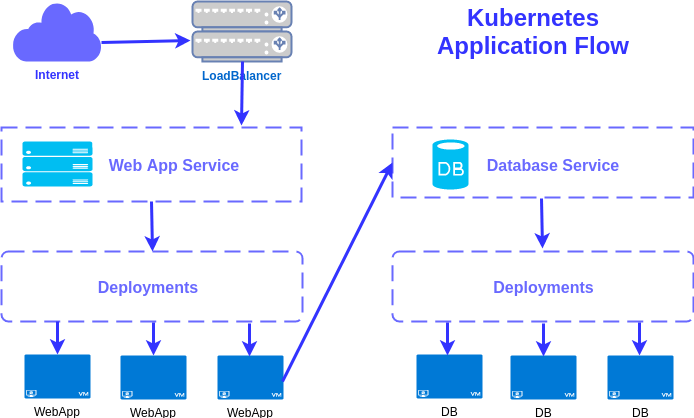Install and Configure Kubernetes Cluster on Ubuntu 16.04
05 Jun 2018 Download PDFCreate 2 VMs and set the hostname
- kube-master
- kube-worker
In Master Node
sudo hostnamectl set-hostname kube-masterIn Worker Node
sudo hostnamectl set-hostname kube-workerUpdate the hosts file in both nodes
sudo vim /etc/hosts
master_private_ip kube-master
worker_private_ip kube-workerInstall Docker in both nodes:
curl -fsSL https://download.docker.com/linux/ubuntu/gpg | sudo apt-key add -
sudo add-apt-repository "deb [arch=amd64] https://download.docker.com/linux/ubuntu $(lsb_release -cs) stable"
sudo apt-get update
sudo apt-get update && sudo apt-get install -y docker-ce=$(apt-cache madison docker-ce | grep 17.03 | head -1 | awk '{print $3}')
Install Kubernetes in both nodes:
Installing Kubeadm, kubelet and kubectl. You will install these packages on all of your machines:
kubeadm: the command to bootstrap the cluster.
kubelet: the component that runs on all of the machines in your cluster and does things like starting pods and containers.
kubectl: the command line util to talk to your cluster.
sudo apt-get update && sudo apt-get install -y apt-transport-https curl
curl -s https://packages.cloud.google.com/apt/doc/apt-key.gpg | apt-key add -
cat **<<EOF >**/etc/apt/sources.list.d/kubernetes.list
deb http://apt.kubernetes.io/ kubernetes-xenial main
**EOF**
sudo apt-get update
sudo apt-get install -y kubelet kubeadm kubectlIn Master Node
Make sure that the cgroup driver used by kubelet is the same as the one used by Docker. Verify that your Docker cgroup driver matches the kubelet config:
systemctl restart kubeletInitialize Cluster The master is the machine where the control plane components run, including etcd (the cluster database) and the API server (which the kubectl CLI communicates with).
sudo kubeadm init --pod-network-cidr=10.244.0.0/16 --apiserver-advertise-address=**kube-master’s_private_ip**To make kubectl work for your non-root user, you might want to run these commands (which is also a part of the kubeadm init output):
mkdir -p $HOME/.kube
sudo cp -i /etc/kubernetes/admin.conf $HOME/.kube/config
sudo chown $(id -u):$(id -g) $HOME/.kube/configAlternatively, if you are the root user, you could run this:
export KUBECONFIG=/etc/kubernetes/admin.confNow, install a pod network add-on so that your pods can communicate with each other. It is a must…
kubectl apply -f https://raw.githubusercontent.com/coreos/flannel/v0.10.0/Documentation/kube-flannel.ymlInstall metrics-server
git clone https://github.com/kubernetes-incubator/metrics-server.git
cd metrics-server
kubectl apply --filename deploy/1.8+/Install heapster
kubectl create -f https://raw.githubusercontent.com/kubernetes/kops/master/addons/monitoring-standalone/v1.7.0.yamlIf API Aggregator no enabled then follow this https://kubernetes.io/docs/tasks/access-kubernetes-api/configure-aggregation-layer/
kubectl get pods --all-namespaces
kubectl get nodes -o wideIn Minion Node
Joining Worker
sudo kubeadm join 192.168.33.10:6443 --token ujbvgu.vxvk2vml3xkcl6q4 --discovery-token-ca-cert-hash sha256:73fca98b91e8fd589f4e50e3f55f4889c9db1ee026ac647af7b6ea0af2f6c624–token: kube-master generated token and –discovery-token-ca-cert-hash: also generated by kube-master, output of (kubeadm init)
If you want to remove all configuration from any node:
kubeadm reset